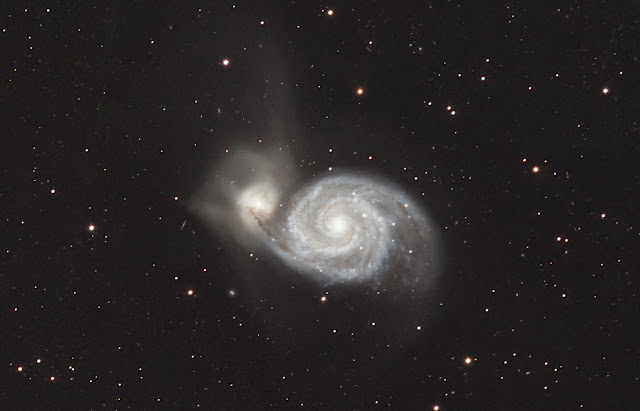The usual Malcolm luck happened last month, I closed down the observatory for some maintenance and what do we get a week full of clear skies. Still it gave me chance to get some jobs complete such as wiring the dome to the wireless controller. Disappointing that the weather was clear but since rebuild, a PA and test of tracking and guiding was needed, Every set up nicely and as expected and from there I have managed over 4 nights captured five and a half hours of LRGB data on target.
I am always astounded and I love the ZWO Asiair pro for its simplicity in doing almost everything now. Some lovely new additions to the software update now include now sky atlas and the ability to name filters. There are of course many things that it cannot do including composing mosaics but I can live with it for now simply because there are other pieces of software such as Telescopius that communicates perfectly with the ability to download a CSV file with the mosaic parameters. There are several summer projects that will use this feature so look out for my updates on this feature.
During bad nights I also took the opportunity and captured a complete set of calibration frames too from darks, dark flats, & Flats.
To top it all I have finally taken the plunge into the technical world of Pixinsight. A scary thought but with the help of some serious video instruction from Adam Block I have created my first image.
Prior to starting the image processing I used Image calibration & Image combination to create all my master calibration frames.
Again this is all very new to me and I followed this process to create my first image.
Calibrated and stacked using the new WBPP (weighted batch pre processing) script new and updated script that works every bit as good as six or seven steps of manual image registration.
Part of this hobby also includes trawling the expanse of YouTube and looking for videos that suit you knowledge set and by chance I found a chap called Richard Bloch. and found Basic image processing in Pixinsight 1.8, the cover image was of M51 and I was processing M51 so thought it worth a look, Turns out his explanations and information were spot on. I will send him a message to say hello and thank you
Dynamic Crop
Autoomatic background extractor
Colour Calibration
Histogram transformation
TGV Noise
Range select
Unsharp mask
curves.
Final result I am more than pleased with.








No comments:
Post a Comment